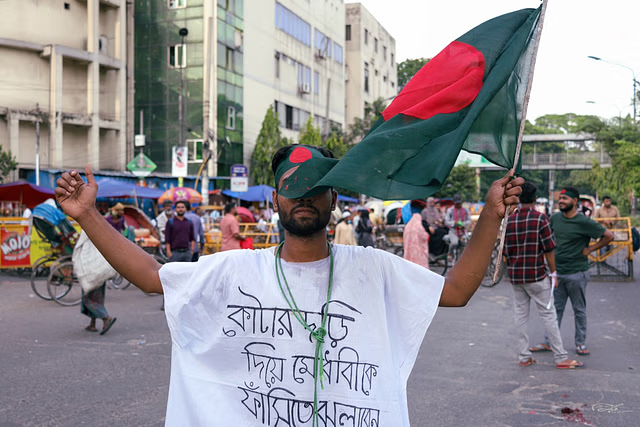By Jaideep Mazumdar
The deaths of students this week will go down as a dark chapter in Bangladesh’s history. Prime Minister Sheikh Hasina, who faces calls to step down from riotous students and others in the country, has only herself to blame for the acute crisis unfolding in Bangladesh.
Unfolding Crisis Despite Media Blackout
Reports emerging despite a total internet ban and news blackout indicate that over a hundred people, predominantly young university and college students, have been killed in clashes with police and members of the Bangladesh Chhatra League, the student wing of the ruling Awami League.
Background of the Protests
Students from various universities launched protests against a 5 June High Court order that struck down a 2018 government circular abolishing quotas in government jobs. Prior to 2018, 56 percent of these jobs were reserved, with a significant portion (30 percent) for children and grandchildren of ‘mukti joddhas’ (freedom fighters). Other reserved categories included candidates from backward districts, women, minorities, and the physically challenged.
Allegations of misuse of these quotas, particularly favoring those associated with the Awami League, spurred widespread protests in 2018. The government responded by abolishing all quotas, but this move was challenged and subsequently struck down by the High Court. On 10 July, the Supreme Court refused to stay the High Court’s decision, igniting fears among students that job quotas might be reinstated.
Escalation of Protests
Initial protests were peaceful, with students blocking major intersections, highways, and rail traffic for a few hours daily. However, as protests spread nationwide, the Chhatra League intervened, attempting to disrupt the demonstrations, leading to violent clashes on university campuses.
Prime Minister Hasina exacerbated the situation on 14 July by questioning whether jobs should be reserved for the descendants of ‘razakars’ (traitors) instead of freedom fighters, a remark perceived as a slur by the protesters. This incited further outrage and intensified protests from 15 July, with Chhatra League activists and police using excessive force, including firing on protesters, resulting in numerous deaths.
Government Response
The government’s response has been criticized as insufficient and delayed. On 18 July, Law Minister Anisul Haque announced willingness to negotiate, but the offer was rejected by students demanding an apology from the Prime Minister and punishment for Chhatra League activists and police officers involved in the violence. The worst violence occurred on 18 July, leading to a curfew and deployment of the army.
Despite these measures, sporadic violence continued, and reports of further student deaths emerged. The government’s crackdown included arrests and detentions at undisclosed locations, amid a total information blackout.
Role of External and Opposition Forces
The opposition BNP and its ally Jamaat-e-Islami have capitalized on the unrest, instigating further protests and violence. Allegations of support from Pakistan and covert backing from the United States have added to the complexity of the situation. However, the primary responsibility lies with the Awami League government’s mishandling of the protests.
Conclusion
Sheikh Hasina and her government’s heavy-handed approach and failure to address student concerns have led to a situation spiraling out of control. The leadership’s actions have provided opposition forces an opportunity to exploit the crisis, and the resulting violence has dealt a significant blow to the nation’s economy. The deaths of students this week will remain a dark chapter in Bangladesh’s history, underscoring the need for a more democratic and responsive governance approach.









